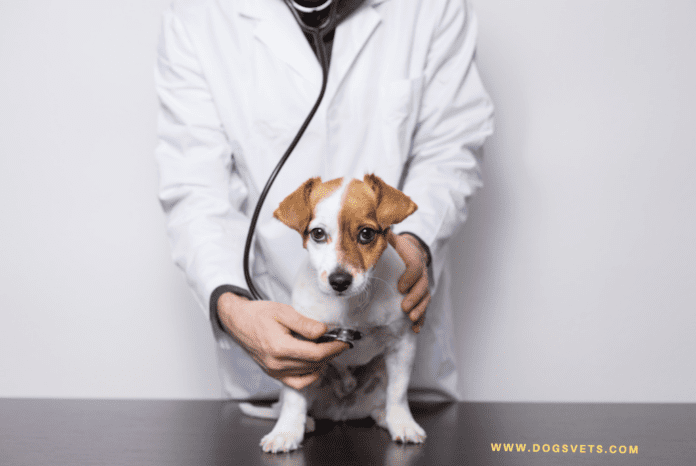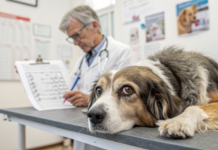Last Updated on September 3, 2022 by Dogs Vets
Low-Cost Spay/Neuter Programs: Pros & Cons
Spaying and neutering your pet is one of the most important things you can do for them.
Not only does it reduce their chances of developing cancers, heart disease, and other conditions later in life, but also it helps control pet population growth.
There are a number of great low-cost spay/neuter programs out there that meet the needs of almost all pet owners – so don’t hesitate to sign up!
Make sure you research carefully before making any decisions though as not all programs offer the same benefits.
Benefits of Spaying/Neutering Your Pet
There are many benefits to spaying and neutering your pet, both for the animal itself and for society as a whole.
Benefits include: Female pets live longer and healthier.
Spaying prevents uterine infections and breast tumors, which occur in 50% of dogs and 90% of cats. Spaying your pet before her first heat prevents these diseases: Neutering prevents testicular cancer and prostate issues.
Behavioral advantages:
Spayed pets don’t go into heat. During breeding season, female cats are in heat four to five days every three weeks. In order to attract mates, they yowl and urinate more often—sometimes everywhere.
- Your spayed female pet will not enter in heat.
- During the breeding season, female cats are typically in heat for four to five days every three weeks. In order to attract a partner, they will yowl and urinate more frequently, sometimes even inside the home.
- Your male dog won’t wander. An intact man will do nearly anything to obtain a mate, including devising ingenious escape methods. Once free to roam, he risks traffic accidents and animal fights.
- Your neutered male pet may be better behaved. Unneutered dogs and cats are more likely to spray strong-smelling urine throughout the house to mark their territory.
- After being neutered, your dog may be less likely to mount other animals, humans, and inanimate objects.
- Early spaying and neutering can prevent some aggressiveness issues.
By preventing unwanted litters from being born, we’re helping to reduce pet overpopulation.
In addition, by performing these surgeries on pets who are of reproductive age, you can help prevent certain genetic defects – such as testicular cancer in dogs.
Moreover, spaying or neutering your pet will also have a positive impact on their health overall – reducing the likelihood of developing various health problems in later life.
And lastly, by taking this step you’re demonstrating your commitment to providing a good home for yours and other animals’ future happiness.
When to Neuter or Spay Your Pet
For dogs:
While the standard age for neutering is 6 to 9 months, healthy puppies can be neutered as young as eight weeks.
Adult dogs can also be neutered, however there is a slightly higher risk of post-operative complications in older dogs, overweight dogs, and dogs with health issues.
For cats:
It is generally considered safe to spay or neuter kittens as young as eight weeks old.
To potentially avoid the onset of urine spraying and eliminate the possibility of pregnancy, it is recommended to arrange the procedure before your cat reaches the age of five months.
A female cat can be spayed while she is in heat. Consult your veterinarian about the optimal time to spay or neuter your pet.
Helping Your Pet Prior to and Following Surgery
Your veterinarian facility will provide you with pre-operative instructions that you should adhere to. In general, you should not feed your dog or cat after midnight the night before surgery.
However, a puppy or kitten requires appropriate nutrition, and your physician may advise against withholding meals.
Your veterinarian can also offer you with post-operative instructions. Even though your pet may endure some pain following surgery, your veterinarian can provide pain relief.
Depending on the operation performed, your pet may be sent home with pain medicine.
Here are some rehabilitation suggestions for safety and comfort:
- Provide your pet with an indoor, animal-free space for rest and recuperation.
- Following surgery, prevent your pet from running and jumping for up to two weeks, or as long as your veterinarian advises.
- By using a properly fitted Elizabethan collar, you can prevent your pet from licking the incision site, which can lead to infection.
- Do not bathe your pet for at least 10 days following surgery.
- Check the site of the incision daily to ensure normal healing.
Please call your veterinarian if you observe any redness, swelling, or discharge at the surgical site, or if the incision is open. In addition, contact your veterinarian if your pet is lethargic, has a decreased appetite, is vomiting or has diarrhea, or if you have any other concerns after surgery.
Pros and Cons of spay/neuter programs
There are pros and cons to low-cost spay/neuter programs. On one hand, these programs offer pet owners affordable spay/neuter surgeries for their pets.
On the other hand, low-cost spay and neuter programs may not provide enough service quality or options for pet owners. Make sure you read the program’s reviews and compare them against other low-cost spay and neuter services to find the best option for you and your pet!
Cons of Low-Cost Spay and Neuter Programs
If you’re looking to spay or neuter your pet, but don’t have the money to do it full price, low-cost spay and neuter programs might be a good option for you.
However, be sure to do your research first – there’s a risk of getting an unhealthy animal if you choose this route instead of paying full price.
Another downside is that these programs often omit important health and behavioural information about animals, which can lead to confusion and problems in the future.
If you’re set on low-cost spay and neuter, make sure to ask about the program’s health and behavioural standards before making a decision.
Pros of low-cost spay/neuter programs
As pet ownership continues to skyrocket, so does the number of animals being spayed and neutered. Low-cost spay/neuter programs offer a great way to reduce pet population numbers while preserving the health and well-being of the animals.
There are some cons to consider before signing up for a low-cost program, such as the quality of service and whether the veterinarian is licensed or certified by humane societies or animal shelters. However, on the whole, low-cost spay/neuter programs are cost-effective, as surgeries are nearly free for some pets.
Some animals that may be eligible for low-cost spay/neuter include dogs and cats, among others.
Additionally, low-cost spay/neuter programs offer a great way to reduce pet stress and anxiety, and make pet owners more aware of their pet’s surroundings.
Spay & Neuter Services
It is important to consider the eligibility requirements of any low-cost spay/neuter program you enroll your pet in. This way, you will be sure that your pet is receiving a service that’s beneficial to both them and society as a whole.
Apart from checking the eligibility requirements, always make sure to get written confirmation from the clinic about your animal’s surgery before leaving. This way, there won’t be any surprises or regrets later on!
Despite being valuable services, low-cost spay/ neuter programs can sometimes lack quality control which means surgeries are often executed on animals that are not eligible for it. So always exercise caution when using this type of service and make sure to ask around beforehand if anyone has had good experiences with a particular clinic.
Benefit of Pet Spay & Neuter
There are a number of great reasons to get your pet spayed or neutered. The most obvious one is that it helps reduce pet overpopulation, which in turn lowers the cost of vet care and housing for animals in shelters.
Another benefit is that these surgeries often result in fewer repeat surgeries due to unclaimed pets.
In addition to these benefits, spay/neuter programs often offer discounts on services for those who qualify – either as low-income residents or as members of certain groups (such as seniors).
However, there are also potential cons associated with low-cost spay/neuter programs. For example, because they’re designed to operate at a budget level, some low-cost neuter programs may have higher euthanasia rates than more expensive options.
And since cats and dogs typically require two surgeries rather than one, there’s an increased likelihood of multiple procedures being needed overall (leading to higher costs).
Spay and neuter helps pets live longer, healthier lives.
There are a number of reasons why spay and neuter surgery is believed to be one of the most important things pet owners can do for their animals.
Firstly, low-cost spay/neuter programs help provide affordable and accessible care for pets. This means that more pets get the necessary medical treatment they need, without throwing their budget into disarray.
In addition, it helps control pet population, which can be beneficial for the environment. Overpopulation often leads to irresponsible breeding practices – which in turn causes serious consequences such as animal cruelty – among others.
Spaying or neutering also results in a longer life span for cats and dogs: typically by around 10-15%.
So not only does this procedure protect companion animals from being put down unnecessarily due to overpopulation (and increased vet bills), but it also gives them plenty of years full of happiness and love!
Pros of Low-Cost Spay and Neuter Programs
There’s no question that spay/neuter is an important step in the health and well-being of both pets and their owners.
Low-cost spay/neuter programs offer an affordable and easy way to improve the pet population, while also reducing the number of pet overpopulation cases.
However, not all low-cost spay/neuter programs are created equal – some may not provide the same level of quality care as traditional vet clinics or through other means, such as rescue organizations. It’s important to do your research before signing up for a program, as some may be fraudulent and charge more than advertised rates.
In the end, though, low-cost spay/neuter programs offer many benefits for both pet owners and animals in need of adoption or sheltering. So, whether you’re looking to improve the health of your pet or reduce the number of animals in need, spay/neuter is an important step to take.
Cons of low-cost spay/neuter programs
There are pros and cons to low-cost spay/neuter programs, but the biggest con is that they often charge higher rates for surgeries than traditional veterinarians. This forces pet owners to make a tough decision – do they opt for the high-cost surgery, or save money by going through a low-cost provider?
Sadly, many animals end up euthanized due to overcrowding or inability to find homes. In addition, poor quality sterilized animals are common due to the lack of experience of some low-cost spay/neuter providers.
Finally, some low-cost spay/neuter programs only offer male or female sterilization, which leaves many pet owners with the choice of having 2 or more cats or dogs.
Low-Cost Spay/Neuter Programs
Low-cost spay/neuter services are available near you.
ASPCA offers NYC spay/neuter services in the five boroughs.
The ASPCA spays/neuters pets of qualified Los Angeles residents. Spay/neuter services in LA.
The ASPCA also serves the communities of Western North Carolina. ASPCA Spay/Neuter Alliance in Asheville, North Carolina, offers spay/neuter services.
Search PetSmart Charities® for low-cost spay/neuter clinics in your area.
Contact a local animal shelter or veterinarian for spay/neuter services.
Frequently Asked Questions
How do I neuter a dog for free?
There are many low-cost spay/neuter programs in place across the United States which can neuter your pet for free.
However, there are some cons as well including: potential health risks if animals go unspayed or unscented (e.g.: urinary tract problems), higher pet adoptions fees due to increased population control measures taken by shelters.
The main pros of these programs include: less animal homelessness, lower veterinary costs, longer life span for animals due to reduced exposure to disease and more humane treatment. So, the best way to neuter your pet for free is to find a low-cost program that suits your needs.
Are there places that will finance my Veterinarian bills?
There are a few low-cost spay/neuter programs that offer financial assistance to people who need it. Make sure to do your research before applying as some of these programs may not be as reliable as others in terms of following through on their promise.
However, like with anything else, there are pros and cons to these programs. The pro side is that you can get your pet spayed or neutered for a fraction of the cost of regular veterinary care.
Do dogs consent to being neutered?
Yes, dogs usually consent to being neutered. The main benefits of spaying/neutering dogs are that they can avoid unwanted pregnancies and reduce the risk of pelvic inflammatory disease (PID). However, not all dog breeds respond uniformly well to anesthesia or surgery, so please consult with your veterinarian before deciding whether or not it’s best for your pet.
Is it safe to get my dog neutered if he is 3 to 4 years old?
There are pros and cons to getting a pet spayed or neutered, but the overall safety of the procedure is largely unknown. So, it’s best to do your own research before deciding if this is right for your pet.
Some of the benefits of having a pet neuter surgery include reducing the risk of cancer, UTIs in dogs, increases lifespan, less aggression and marking behavior when roaming free outdoors (among others).
However, there are also risks associated with surgery – including risks for anesthesia complications and infection postoperatively. Therefore, it is ultimately up to you as the pet parent to decide if your dog should be spayed or neutered. But, in the meantime, make sure to talk to your veterinarian about the pros and cons of both surgeries and decide what might be best for your pet.
How much does it cost to spay a cat in Oregon?
There are several factors that will affect the cost of spaying or neutering a cat in Oregon, including the location of the shelter, the type of surgery being performed, and any additional medical expenses involved.
Generally speaking, spay/neuter surgeries cost between $120 and $200.
In addition to this, many shelters offer discounted rates for people who do their research on site before bringing in their pet. Additionally, it is necessary to cover all medical expenses for your animal – from examination costs to surgery and postoperative care.
When choosing an organization to spay/neuter your cat, make sure to pick one that you trust and that performs surgeries using sterile equipment. Operating a low-cost spay/neuter program can be very costly.
How much does it cost to spay a dog in Washington state?
It typically costs around $60 to spay or neuter a dog in Washington state. However, this price varies depending on the service being provided as well as the location.
Some counties have lower prices while others are higher. Additionally, you can check with local animal shelters and rescues to see if they offer low-cost spay/neuter programs for pooches in need.
How much does it cost to spay a cat NYC?
It cost between $20 and $50 to spay or neuter a cat in NYC, depending on the clinic you go to. However, this cost doesn’t always include the cost of surgery/anesthesia, so it’s important to be aware of that before making your decision.
There are also some cons associated with low-cost spay/neuter programs, such as the surgeries not always being done properly resulting in health problems down the line for your cat.
In the end, it’s important to weigh the pros and cons of spaying or neutering your cat before making a decision. Doing so can help control pet overpopulation, provide less nuisance behavior in your home, and make your cat easier to handle.
How much is neutering a cat?
Some potential cons associated with getting your cat spayed or neutered include sexual behaviour changes in males and females postop due to the loss of testosterone production.
However, the benefits of spaying/neutering your pet go beyond reducing their population – they also have decreased rates of urinary tract infections, cancer, lordosis (back problems), testicular cancer and pyometra (a uterine infection in cats). Generally, neutering a cat costs between $50 and $100. So it’s definitely worth it!
Why isn’t neutering free/low cost?
There are a few reasons why neutering your pet may not be free or low cost. The main reason is that many people see neutering their pet as a short term fix rather than looking at it as an investment to save them from potential health problems in the future.
By spaying and neutering your pet, you’re preventing them from getting pregnant in the first place, which reduces the number of litters that will be created over time. The cost of spaying/neutering can be quite high when factoring in anesthesia, surgery, post operative care and other expenses.
In addition, one of the main reasons for neutering being not free or low cost is that it requires financial input from both the animal’s and human’s perspectives.
Conclusion
There are pros and cons to low-cost spay/neuter programs, and the decision of whether or not to participate is ultimately up to you.
While low-cost spay/neuter programs have some negative aspects, they can also be a cost-effective way to spay and neuter your pets.
It is important to weigh the pros and cons of each program carefully before making a decision, as the consequences of not spaying or neutering your pets can be serious. Thank you for reading our blog and we hope that you found it helpful.
Fact Check
We hope you enjoyed this article… What are your thoughts?
Pls feel free to share this article!

















